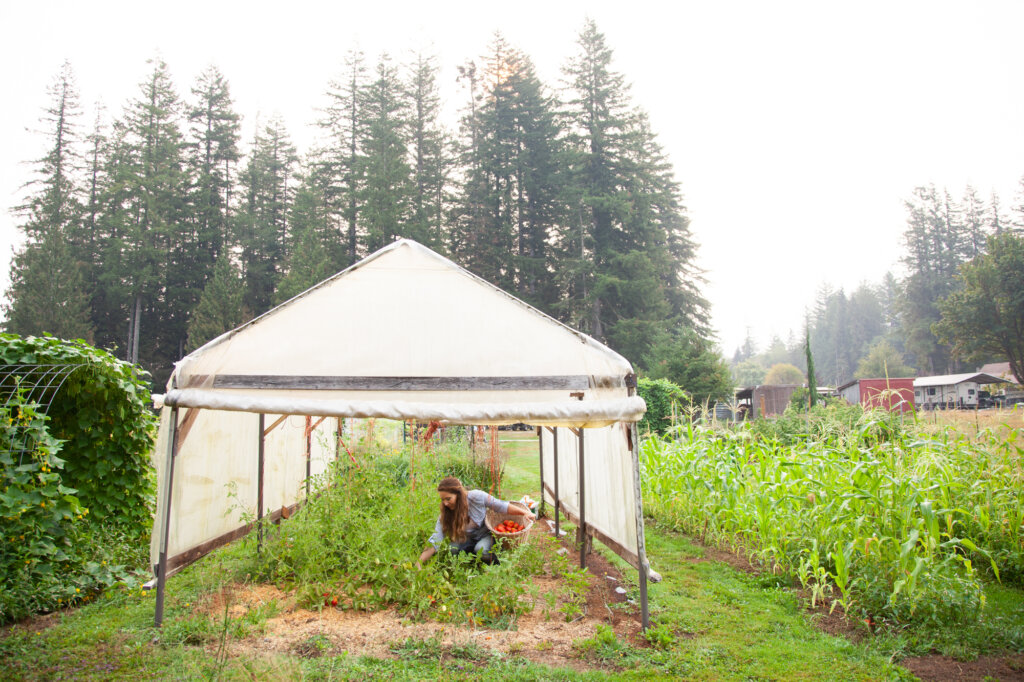These garden planning ideas will help you build a better vegetable garden, small or large. Plan and design your layout and get ready for your most successful gardening season yet.

Learn how to plan your crops for the garden customized to your homesteading needs and what your family eats. I’m always excited about the new year; it’s when I take the time to step back, evaluate what’s working and what isn’t, and make changes where they need to be.
Note: This blog post has been updated to include multiple podcast episodes on garden planning and a YouTube video all about ordering and organizing seeds. Over the years, I’ve had multiple listeners asking for my best garden-planning tips, so download each of these podcasts and listen to them at your leisure! Here’s to your best gardening year yet!
Listen to the full episodes of the Pioneering Today Podcast, where we don’t just inspire you but give you the clear steps to create the homegrown garden, pantry, kitchen and life you want for your family and homestead:
Watch the newest video below ?
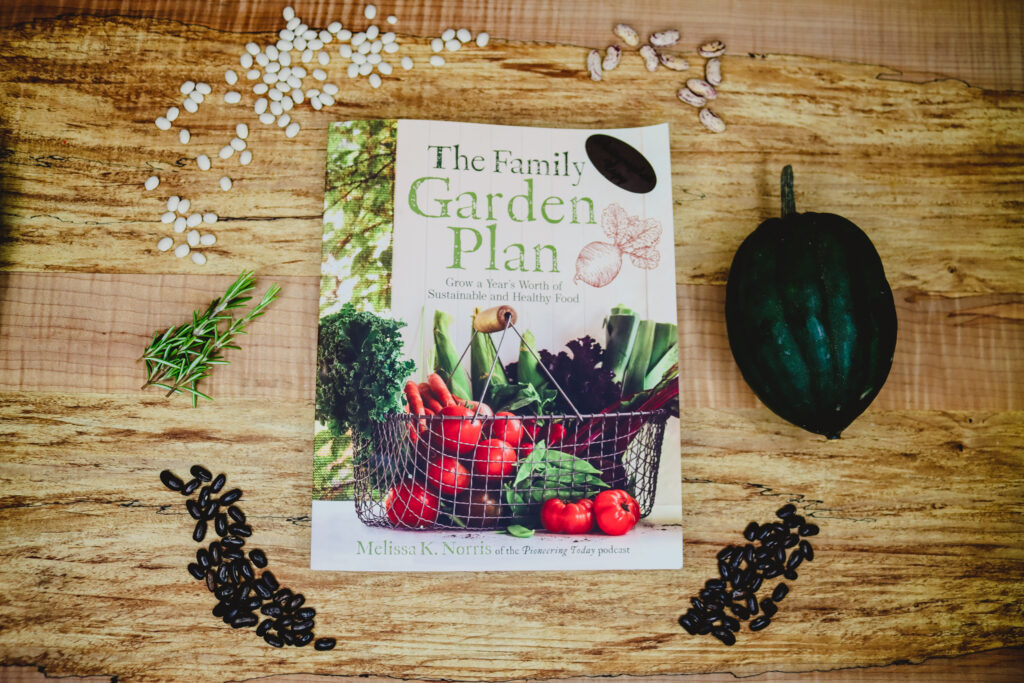
Why Garden Planning Is Important
Being a 5th generation homesteader has taught me the importance of planning. Knowing how to grow your own food with these ten tips for beginners will give you the confidence to get started. People ask, does gardening save money? It does with these strategies.
The secrets beginning gardeners should know and spring gardening tips will boost your confidence even more. We are all beginners at some point, and planning what to grow is educational and easy when you learn about the nuances of organic gardening and permaculture gardening for beginners.
My dad grew up during the great depression. He learned the importance of planning out what the garden would produce and when for survival. If they didn’t have food, they went without, and I’m so glad he passed these skills down to our family.
Thankfully, it’s not a matter of survival for us but rather a lifestyle choice to eat healthier food, fill the pantry, and save some money in the process.
Planning what crops we need on our homestead for the coming year to keep our family fed is not much different than all the generations that went before me. We raise all our meat, grow and preserve 60% of our fruit and grow a whole lot of veggies, so planning is crucial!
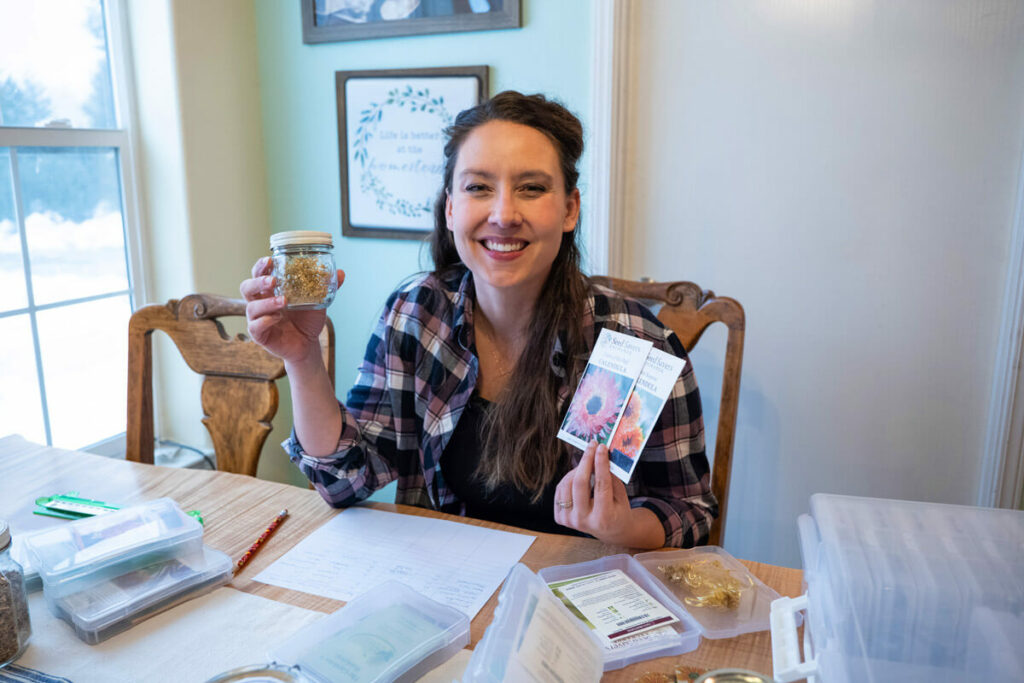
How to Plan a Vegetable Garden
Take Inventory
If this is your first year growing your food, you may need to take inventory of the foods your family eats. From there, evaluate how much time it takes to grow a year’s worth of food and how much of each item you consume in a year. Look at your current pantry and see what foods you use the most.
If you don’t have a well-stocked pantry, keep track of the meals and foods you eat regularly. Do you have spaghetti, chili, or something with tomato sauce weekly or almost weekly? What frozen or canned vegetables are you using consistently?
Document this, write it down in a designated notebook with dates and years, keeping a notation of what you use in an average month, and then multiply this by 12. I didn’t start growing a year’s worth of food for our family but worked up to it using this plan.
If you’ve already been preserving food from your garden, I recommend taking inventory. Go through your freezer and your pantry shelves of preserved food to see where you nailed it to have enough food for the year and where you need to catch up. Remember the spice and herb cupboard; these are important for flavoring foods and medicinal purposes.
If you find you’re already out of pickles and it’s only February, then you know next year you’ll want to make more. However, if you’re still staring at 20 jars of canned beets, maybe next year you can skip the beets (or at least scale down on how much you plant).
Now that you’ve evaluated how much food you have left, you know which crops need to be increased or decreased for this year. You must review your inventory each year. Don’t go by the previous year’s inventory because things change. Some years, crops do better or worse in the garden, so our yield will vary. Take notes and adjust each year as needed.
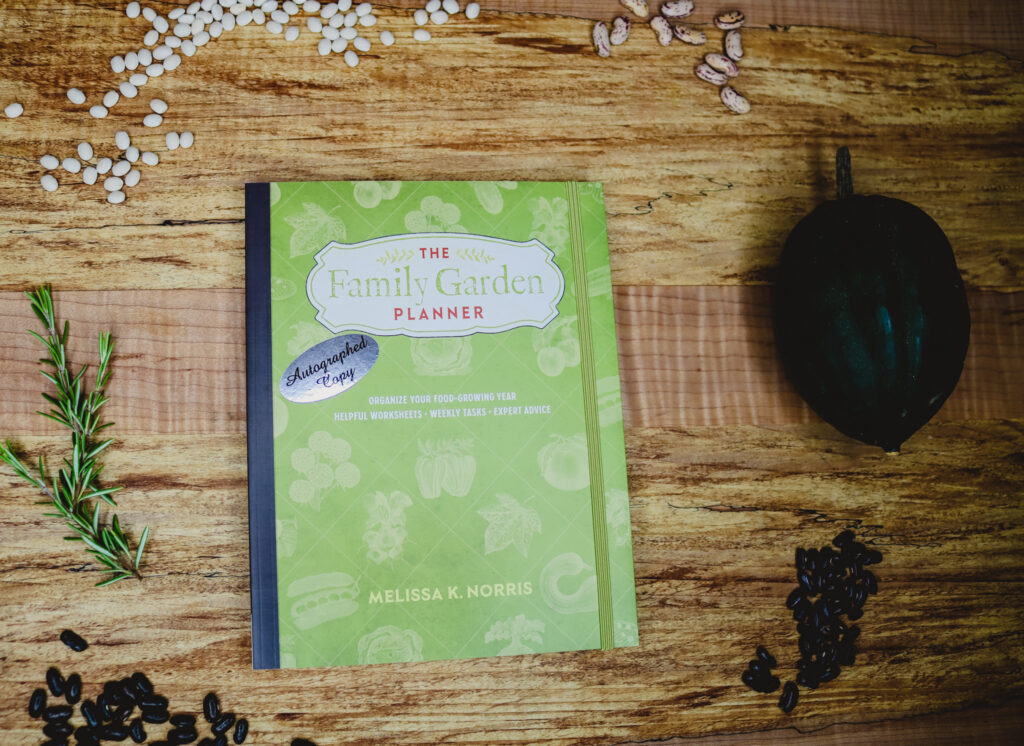
Garden Planning – What Will You Plant?
Based on my inventory, I plan which crops we need to grow this year. Knowing this information gives you a good start, even if you’ve never grown a garden.
Keeping track of this information will give you an idea of what you eat so you can plan what foods to grow. Good records keep you on track when succession planting and Summer and Fall planting so you don’t miss the window of opportunity for planting certain crops.
When planning the crops you want, you’ll need to look at a few areas to make it all come together. Here are a few ideas to get you started:
- Calculate the Space Needed – If you don’t have a lot of garden space, then trying to grow all of your corn is not feasible. If you have limited space, go for plants that grow vertically. My top picks for the best vegetables for small spaces blog post has great information for limited space and a thriving garden. I also recommend growing something with more yield. Growing a cucumber plant will yield dozens of cucumbers, where as planting one onion will only yield one onion.
- Know Your Growing Season – Knowing your first and last frost dates will help give you a general idea of your growing season (and just how long or short it is). This is valuable information when planning which crops to grow. These dates will differ depending on your location, but you can find these average dates by entering your zip code here. Do not be disheartened if you have a short growing season. You can check out these tips on extending your garden season and planting three gardens in one year.
- Know what Grows in Your area – Don’t waste time nurturing plants unlikely to grow in your climate. Seed packets and plant starts give you valuable information about the growing season and climate needs. Ask a seasoned gardener in your area for ideas, tried and true varieties and stick to what grows best in your zone.
- Grow What You Eat – You may have space and the right conditions to grow Brussels sprouts, but if your family won’t eat them, why spend the effort growing them? Make a list of what you know you like to eat, and you will enjoy growing, harvesting and preserving it, and preventing food waste.
- Know How Much to Plant – My book The Family Garden Plan and The Family Garden Planner will give you strategizing ideas for how much of each crop you should plant. This planner is filled with all my notes, gardening tips, planting calendars, and plenty of space for you to fill in the information regarding your specific garden and zone.
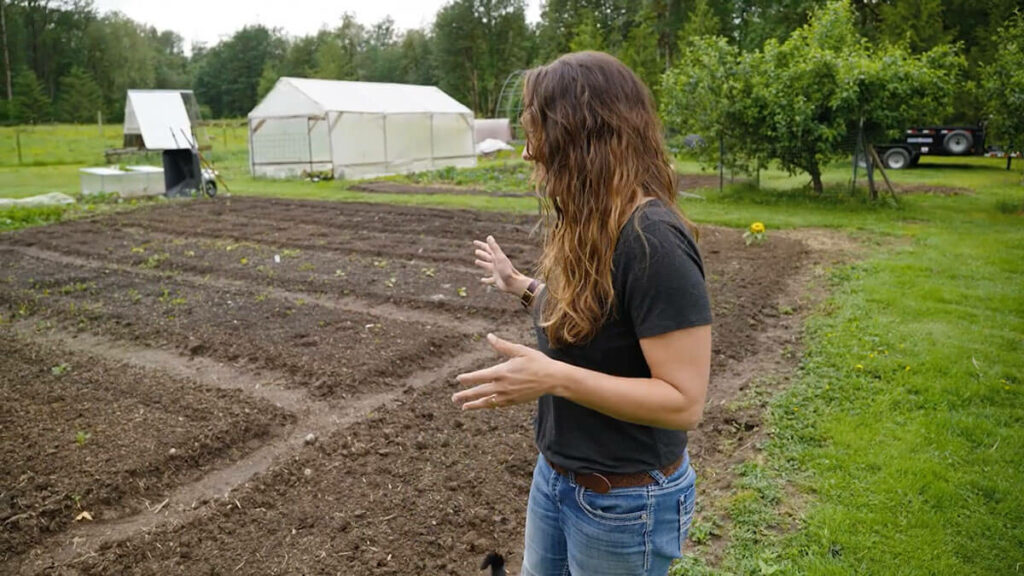
Draw a Map
The real estate mantra, “location, location, location,” applies to gardening, too. Whether you have a large garden plot, use raised garden beds, or have a small container garden, make sure you choose the best location for your garden. Then, draw a map of where to plant each crop. (Pro Tip: use a pencil and press lightly so you can easily erase and make adjustments.)
According to your garden layout, you will want to know what grows best in full sun versus partial shade and at what time of day. Are your garden beds in rows or square feet? Do you prefer the raised bed method for your gardening style?

Check Your Seed Supply
Order your seeds sooner rather than later. Seed suppliers only have so much stock, and you want to ensure you get what you need before they sell out. I love thumbing through the seed catalogs. It’s like the adult version of the Toys R’ Us catalog for kids at Christmas.
All those seed packets look so beautiful and enticing, but trust me on this: stick to what grows well in your zone and pay attention to the time it takes to produce it. I live in a cool, wet climate, so I shoot for a shorter growing season and cool weather crops.
Once you grow a specific food well, keep at least two years of seeds on hand. Then branch out and add one new variety at a time. You will set yourself up for success and learn valuable knowledge for the future.
Learn where to order the best seeds for the best germination rate and why you should order heirloom seeds. The bonus of learning how to save all of your own heirloom seeds for the next gardening season is easy and rewarding! Also, check out this post on how to store seeds.
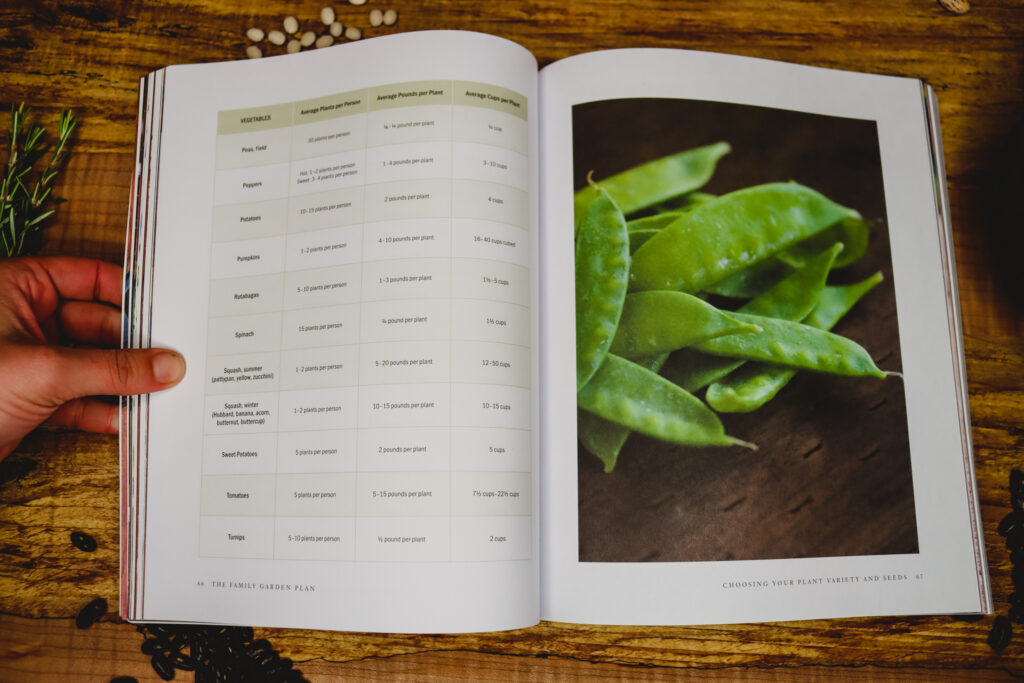
Keep Records
All gardeners should have a gardening book or journal. Make a note of what you plant, how much you plant and what it yields. It can be as simple as photographing your garden to remember where you grew each crop or a full-out blueprint diagram.
You’ll also want to make notes on how your plants grew. Did you have pest or mold issues? What was the size of the plant and harvest? This information is valuable if a different variety is best or you need to adjust the growing conditions. Learn what works best for you, and go for it.
Trust me on the documentation part. I used to think I could remember everything and have had some blunders along the way. I double-planted butternut squash one year instead of zucchini because I didn’t write it in my garden journal. It was a tasty mistake, but I missed the zucchini.
Are you trying to decide what to plant for your garden this year? I’ve got a free handy dandy chart to help you with my FREE Garden Planting Charts. Enjoy!

Resources
Podcast #124
- FREE How Much to Plant Per Person Gardening Charts
- 9 Fruits You Can Plant in Winter.
- 4 Tips to Successfully Grow Your Own Food
- Verse of the Week: Genesis 2:2-3
Podcast #18
Find out more about becoming a member of the Pioneering Today Academy.
Podcast #289
- Succession Planting Chart and Guide
- The Family Garden Plan
- The Family Garden Planner
- FREE printable garden planning guide.
- Seed organizer.
- Seed companies I recommend.
- The best way to germinate seeds.
- Verse of the Week: Ephesians 5:15-16

Other Articles You May Enjoy
- What Is Organic Gardening and How to Start an Organic Garden at Home
- Permaculture Garden – Beginners Guide
- Beginner Gardening Secrets You Need to Know
- Grow Your Own Food – Helpful Tips For The Beginning Gardener
- Does Gardening Save Money
- How Much to Plant Per Person for a Year’s Worth of Food
- The Best Vegetables for Small Spaces
- Best Location for a Vegetable Garden
- Small Space Vegetable Gardening Urban Gardening Tips
- Raised Bed Gardening Tips – 9 Things You Need to Know
- Hot Climate Gardening Tips
- Time-Saving Gardening Tips
- How to Improve Soil for Gardening – 3 Easy Tips
